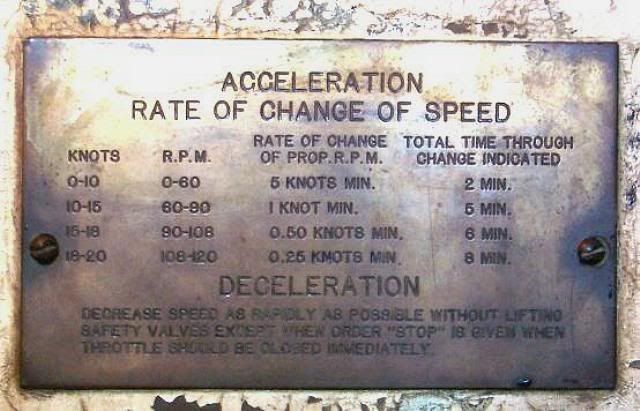I'm glad to see more than one person working on this. The chart posted by tater was (I think) originally posted by me, quite some time ago. I've often wondered how accurate it is. It says it was created for 1929 war games. Was this an official Royal Navy war game, and were the curves created by naval experts of that time, or was it created by people like us for a homemade wargame? I know you don't know the answer to that question any more than I do. I was just putting it out there. Either way it doesn't really matter - there is no other information available. My problem with it is that I think destroyers should have a much better base acceleration. What slows them all down is that if a torpedo is spotted the captain or OOD first has to give the order, then the lee helmsman has to signal the engine room to make the change, then the lead engineer has to shout the order to the man at the throttles, and then he actually has to move them. With a fast warship I think the bigger problem is the time delay between the spotting of the incoming torpedo and the actual increase in power. This is also the problem with them reversing so quickly - a collision is likely to happen not because a small fast ship can't stop in time, but because the collision might well happen before the engines are even reversed!
My interest comes from a long history of tabletop miniatures naval wargaming. I've been working on my own rules for twenty years now, and have never quite gotten them finished, precisely because I keep obsessing over these questions. All I've ever had to go on were a thorough study of power/weight ratios and collected data on everything I could find. Not much, really. The only piece of real information I've ever seen was this placard from the engine room of a WW2 aircraft carrier, and I don't even remember which one it came from!
